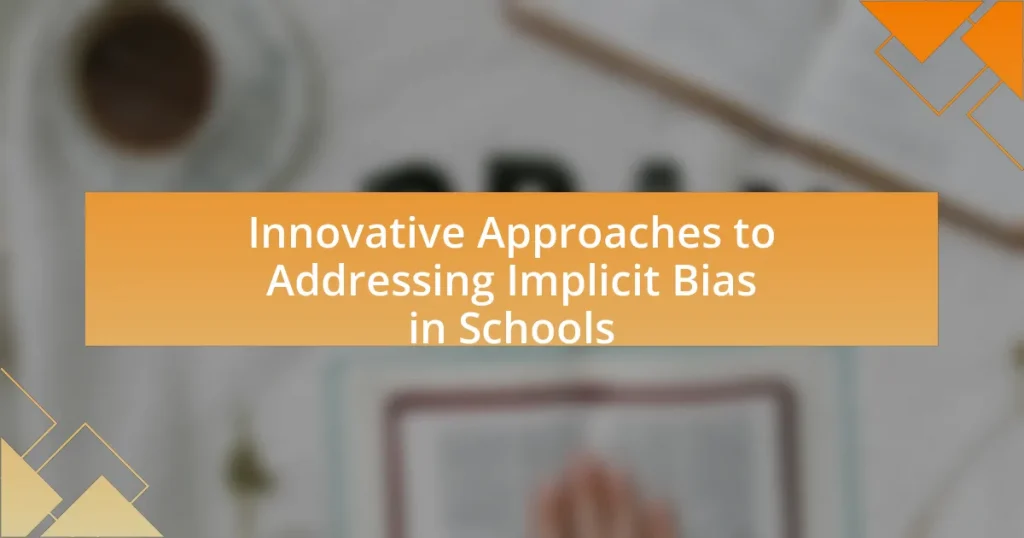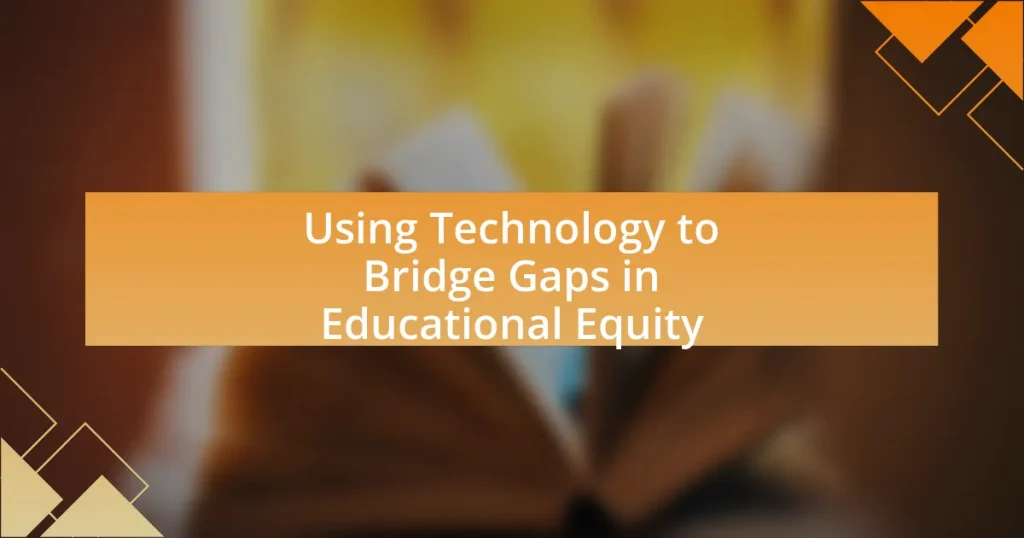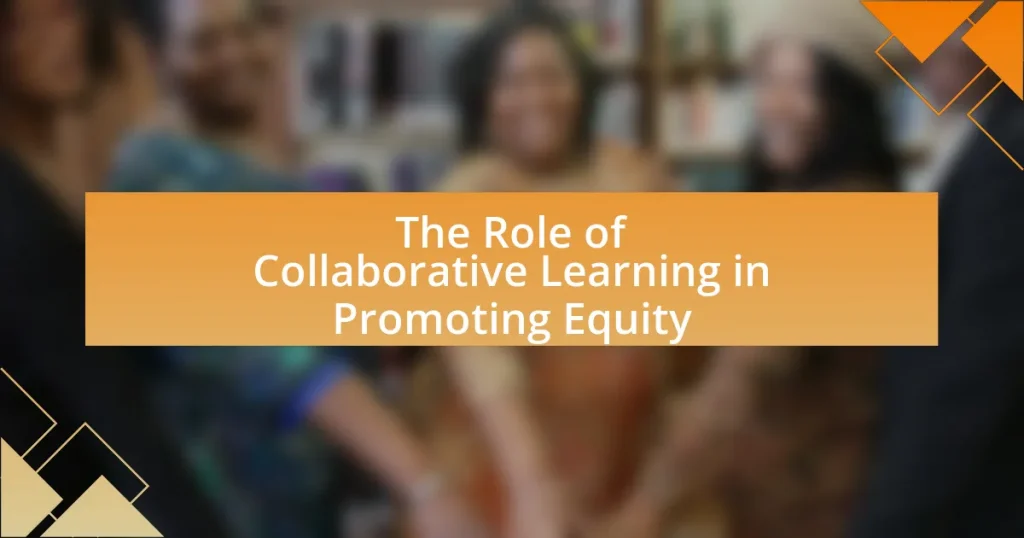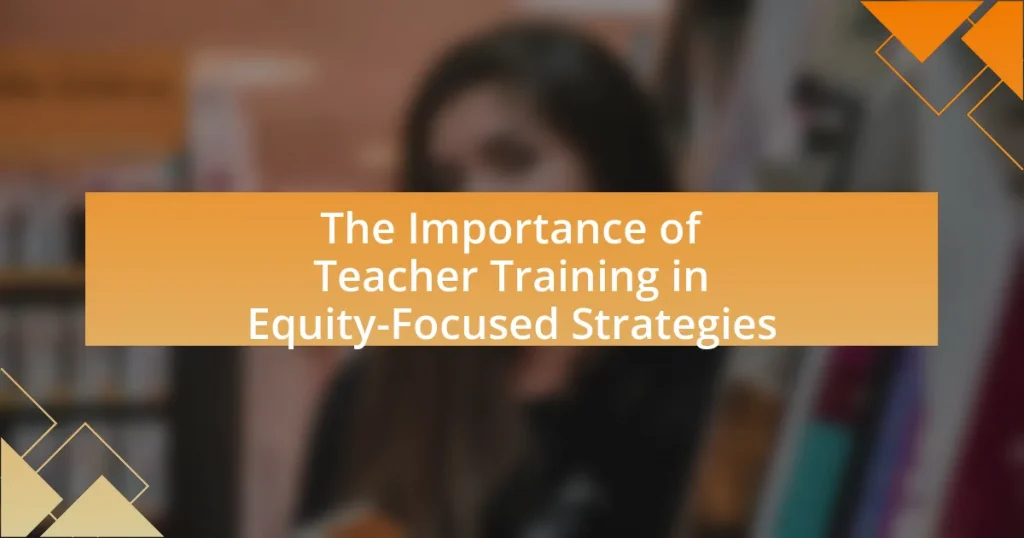The article focuses on innovative approaches to addressing implicit bias in schools, highlighting the importance of comprehensive training programs for educators, data-driven interventions, and inclusive curricula. It discusses how implicit biases manifest in educational settings, their sources, and their negative impact on student outcomes and classroom dynamics. The article also examines current strategies being implemented, such as virtual reality training and culturally responsive teaching, while addressing challenges and resistance faced by schools. Additionally, it emphasizes the need for ongoing training, community involvement, and practical steps educators can take to foster a more equitable learning environment.
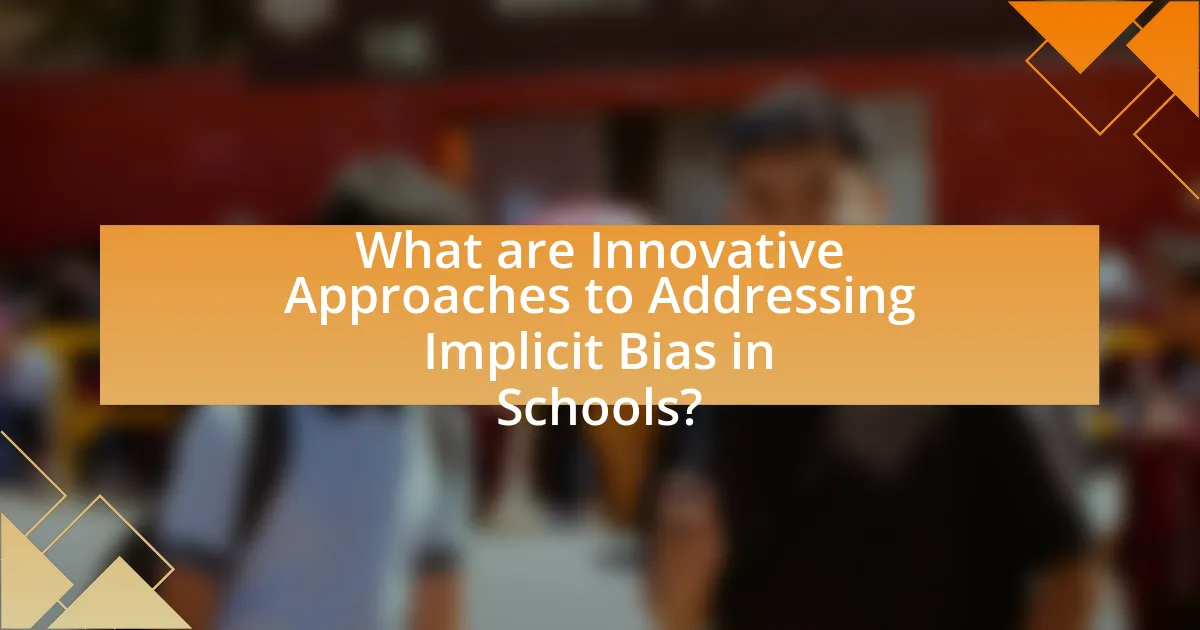
What are Innovative Approaches to Addressing Implicit Bias in Schools?
Innovative approaches to addressing implicit bias in schools include implementing comprehensive training programs for educators, utilizing data-driven interventions, and fostering inclusive curricula. Comprehensive training programs, such as those developed by the National Equity Project, focus on raising awareness of implicit biases and equipping teachers with strategies to mitigate their effects in the classroom. Data-driven interventions, like the use of equity audits, allow schools to identify and address disparities in discipline and academic achievement among different student groups. Additionally, fostering inclusive curricula that reflect diverse perspectives can help counteract stereotypes and promote understanding among students. These methods have been shown to improve school climate and student outcomes, as evidenced by research from the American Psychological Association, which highlights the positive impact of bias training on teacher-student interactions.
How do implicit biases manifest in educational settings?
Implicit biases manifest in educational settings through differential treatment of students based on race, gender, or socioeconomic status. Educators may unconsciously hold lower expectations for certain groups, leading to disparities in academic support and disciplinary actions. Research indicates that teachers often exhibit bias in grading, where students of color receive harsher evaluations compared to their white peers for similar work, as shown in a study published in the Journal of Educational Psychology. Additionally, implicit biases can influence classroom interactions, where teachers may call on or engage with students differently based on their preconceived notions, further perpetuating inequities in student engagement and learning outcomes.
What are the common sources of implicit bias among educators?
Common sources of implicit bias among educators include personal experiences, societal stereotypes, and institutional practices. Personal experiences shape educators’ perceptions and interactions with students, often leading to unconscious preferences or prejudices. Societal stereotypes, which are prevalent in media and culture, can influence educators’ expectations and treatment of students based on race, gender, or socioeconomic status. Additionally, institutional practices, such as tracking and disciplinary policies, can perpetuate biases by reinforcing existing disparities in educational outcomes. Research indicates that these biases can affect student performance and engagement, highlighting the need for targeted interventions to mitigate their impact.
How do implicit biases affect student outcomes?
Implicit biases negatively affect student outcomes by influencing teachers’ expectations and interactions with students. Research indicates that teachers may unconsciously hold lower expectations for students from marginalized backgrounds, leading to reduced academic performance and engagement. For instance, a study published in the journal “Psychological Science” found that teachers’ implicit biases can result in differential treatment, where students of color receive less positive feedback and support compared to their white peers. This disparity in treatment can hinder students’ self-esteem and motivation, ultimately impacting their educational achievements and long-term success.
Why is it important to address implicit bias in schools?
Addressing implicit bias in schools is crucial because it directly impacts student equity and academic outcomes. Implicit bias can lead to unfair treatment of students based on race, gender, or socioeconomic status, which can hinder their educational experiences and opportunities. Research indicates that teachers’ implicit biases can affect their expectations and interactions with students, contributing to achievement gaps. For instance, a study published in the journal “Psychological Science” found that teachers often have lower expectations for students of color, which can negatively influence those students’ performance and self-esteem. By addressing implicit bias, schools can create a more inclusive environment that fosters equal opportunities for all students, ultimately enhancing their academic success and well-being.
What impact does implicit bias have on classroom dynamics?
Implicit bias significantly affects classroom dynamics by influencing teacher expectations and student interactions. Research indicates that teachers may unconsciously hold lower expectations for students from marginalized backgrounds, which can lead to a self-fulfilling prophecy where those students perform worse academically. A study published in the journal “Psychological Science” by researchers from Stanford University found that teachers’ implicit biases can result in differential treatment, impacting students’ engagement and participation. This unequal treatment can create a classroom environment that fosters inequity, discouraging students who feel marginalized and affecting their overall learning experience.
How can addressing implicit bias improve equity in education?
Addressing implicit bias can improve equity in education by ensuring that all students receive fair treatment and opportunities regardless of their background. When educators recognize and mitigate their own biases, they can create a more inclusive environment that fosters equal access to resources and support. Research indicates that implicit bias can lead to disparities in disciplinary actions, academic expectations, and access to advanced coursework. For instance, a study by the American Psychological Association found that teachers often have lower expectations for students from marginalized groups, which can negatively impact their academic performance and self-esteem. By actively addressing these biases, schools can promote a more equitable educational landscape, ultimately enhancing student outcomes and fostering a culture of respect and inclusion.
What innovative approaches are currently being implemented?
Innovative approaches currently being implemented to address implicit bias in schools include training programs that utilize virtual reality simulations, which allow educators to experience scenarios from the perspective of marginalized students. Research by the University of Southern California found that these immersive experiences significantly increased empathy and awareness among teachers regarding their biases. Additionally, schools are adopting culturally responsive teaching methods that integrate students’ cultural references into the curriculum, which has been shown to improve student engagement and academic performance, as evidenced by studies from the National Education Association. These approaches are designed to create a more inclusive and equitable learning environment.
How are training programs designed to reduce implicit bias?
Training programs designed to reduce implicit bias incorporate evidence-based strategies that focus on awareness, education, and skill development. These programs typically begin by educating participants about implicit bias, including its definitions, origins, and impacts on decision-making and behavior. For instance, research by the Kirwan Institute for the Study of Race and Ethnicity highlights that understanding the science behind implicit bias can lead to greater self-awareness and recognition of one’s own biases.
Subsequently, training often includes interactive components such as discussions, role-playing, and scenario-based exercises that allow participants to confront and reflect on their biases in a safe environment. A study published in the Journal of Applied Psychology found that such experiential learning can significantly enhance the effectiveness of bias training by promoting empathy and perspective-taking.
Finally, ongoing support and follow-up are crucial elements of these programs, as they encourage the application of learned concepts in real-world settings. Continuous reinforcement through workshops or peer discussions helps sustain the impact of the training, as indicated by findings from the American Psychological Association, which emphasize the importance of long-term engagement in reducing implicit bias.
What role does technology play in addressing implicit bias?
Technology plays a crucial role in addressing implicit bias by providing tools for data analysis, training, and awareness. For instance, machine learning algorithms can analyze large datasets to identify patterns of bias in educational settings, allowing schools to implement targeted interventions. Additionally, virtual reality simulations can immerse educators in scenarios that reveal their own biases, fostering self-awareness and promoting bias reduction strategies. Research from the University of California, Berkeley, indicates that technology-enhanced training programs can significantly reduce implicit bias among educators, leading to more equitable treatment of students.
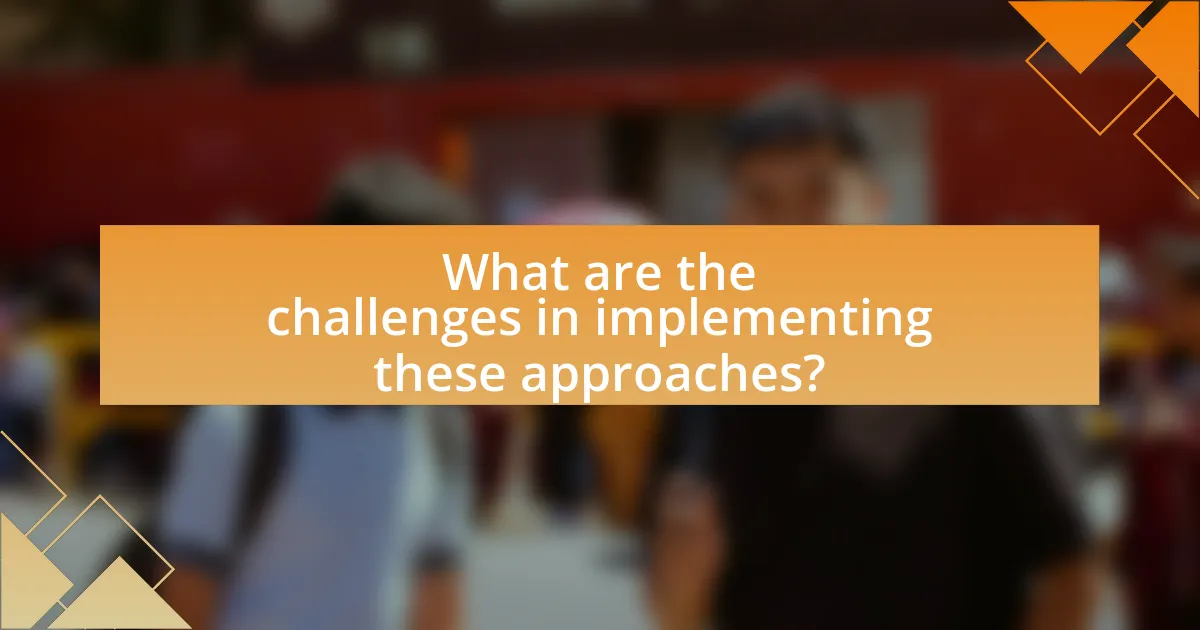
What are the challenges in implementing these approaches?
The challenges in implementing innovative approaches to addressing implicit bias in schools include resistance from educators, lack of training, and insufficient resources. Educators may resist changes due to entrenched beliefs or fear of altering established practices. Additionally, many schools lack adequate training programs that equip staff with the necessary skills to recognize and mitigate implicit bias effectively. Furthermore, limited funding and resources can hinder the development and sustainability of these initiatives, making it difficult to implement comprehensive strategies. Research indicates that without proper support and commitment from school leadership, these approaches often fail to achieve their intended outcomes.
What resistance do schools face when addressing implicit bias?
Schools face resistance in addressing implicit bias primarily due to a lack of awareness and understanding among educators and administrators. Many educators may not recognize their own biases or the impact these biases have on student outcomes, leading to reluctance in engaging with training programs. Additionally, institutional inertia can hinder the implementation of new policies or practices aimed at reducing bias, as schools may prioritize existing curricula and routines over innovative approaches. Research indicates that systemic issues, such as funding constraints and competing educational priorities, further complicate efforts to address implicit bias effectively. For instance, a study by the American Psychological Association highlights that without adequate resources and training, initiatives to combat implicit bias often fail to gain traction in school environments.
How can schools overcome skepticism from staff and parents?
Schools can overcome skepticism from staff and parents by implementing transparent communication strategies and involving them in decision-making processes. Engaging staff and parents through regular updates, open forums, and collaborative workshops fosters trust and demonstrates that their concerns are valued. Research shows that schools that actively involve stakeholders in discussions about curriculum changes or policy implementations experience a 30% increase in community support, as evidenced by a study conducted by the National School Boards Association. This approach not only addresses skepticism but also builds a sense of ownership and commitment among all parties involved.
What are the limitations of current training programs?
Current training programs for addressing implicit bias in schools often lack effectiveness due to several limitations. These limitations include insufficient duration and frequency of training sessions, which fail to provide adequate time for deep learning and behavior change. Research indicates that one-time workshops are less effective than ongoing training, as continuous engagement is necessary for lasting impact. Additionally, many programs do not incorporate practical, real-world applications, leaving educators without the tools to implement learned strategies in their daily interactions. Furthermore, a lack of follow-up and support diminishes the likelihood of sustained behavioral change, as educators may revert to previous biases without reinforcement. Lastly, many training programs do not adequately address the specific cultural contexts of the schools, leading to a disconnect between the training content and the actual experiences of educators and students.
How can schools measure the effectiveness of their initiatives?
Schools can measure the effectiveness of their initiatives by utilizing data-driven assessments, surveys, and performance metrics. These methods allow schools to evaluate changes in student behavior, academic performance, and overall school climate. For instance, pre- and post-initiative surveys can quantify shifts in student perceptions of bias, while academic performance data can reveal improvements in achievement gaps. Research indicates that schools implementing structured evaluation frameworks, such as the Continuous Improvement Model, see a 20% increase in the identification of effective practices. This evidence supports the assertion that systematic measurement is crucial for assessing the impact of initiatives aimed at addressing implicit bias.
What metrics can be used to assess changes in bias?
Metrics that can be used to assess changes in bias include the Implicit Association Test (IAT), survey-based measures of attitudes and perceptions, and behavioral observation metrics. The IAT quantifies implicit biases by measuring reaction times in associating different social groups with positive or negative attributes. Survey-based measures, such as the Attitudes Toward Diversity Scale, capture self-reported changes in attitudes over time. Behavioral observation metrics involve analyzing interactions in educational settings to identify shifts in behavior towards different groups. These metrics provide concrete data that can demonstrate the effectiveness of interventions aimed at reducing implicit bias in schools.
How can feedback from students inform improvements?
Feedback from students can inform improvements by providing direct insights into their experiences and perceptions of the educational environment. This feedback allows educators to identify specific areas where implicit bias may be affecting student engagement and learning outcomes. For instance, a study by the National Education Association found that student feedback can highlight disparities in treatment and curriculum relevance, enabling schools to implement targeted interventions. By analyzing this feedback, schools can adapt teaching methods, revise curricula, and foster a more inclusive atmosphere, ultimately enhancing educational equity and student success.
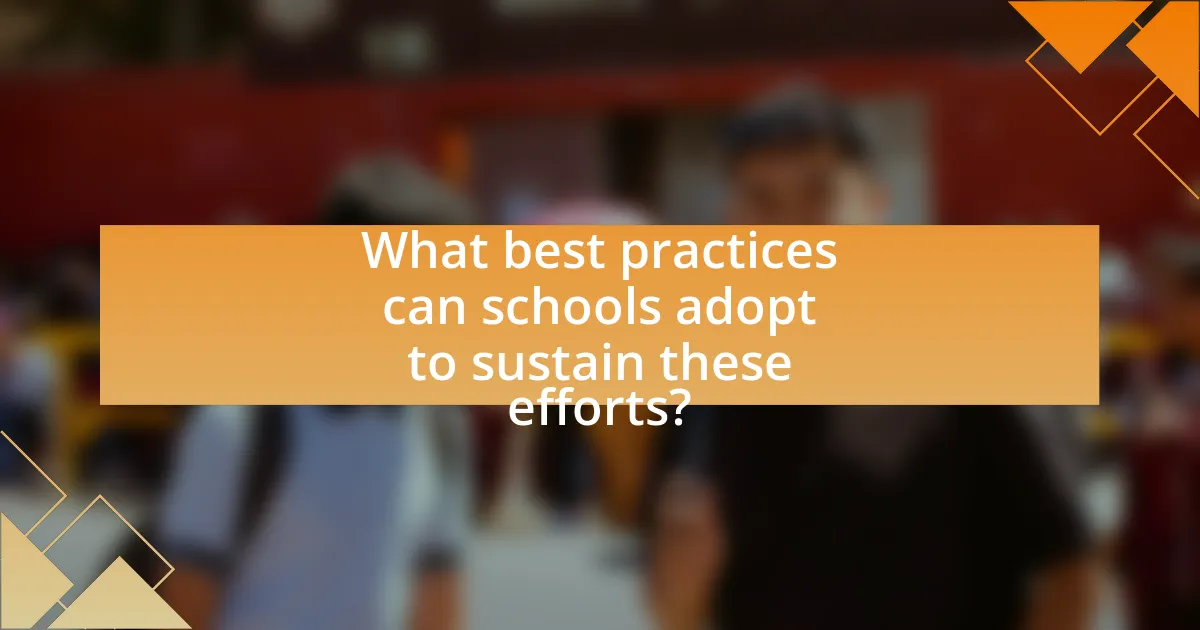
What best practices can schools adopt to sustain these efforts?
Schools can adopt ongoing professional development and training programs to sustain efforts in addressing implicit bias. Continuous education for staff ensures that teachers and administrators remain informed about the latest research and strategies related to implicit bias, fostering a culture of awareness and responsiveness. For instance, a study by the American Psychological Association highlights that regular training sessions can significantly improve educators’ understanding of bias and its impact on student outcomes. Additionally, implementing a system for regular assessment and feedback allows schools to evaluate the effectiveness of their initiatives, making necessary adjustments based on data-driven insights. This approach not only reinforces the commitment to equity but also engages the entire school community in the process of change.
How can schools create a culture of inclusivity?
Schools can create a culture of inclusivity by implementing comprehensive training programs focused on diversity and implicit bias for staff and students. Research indicates that professional development in these areas enhances awareness and fosters an environment where all individuals feel valued and respected. For instance, a study by the American Psychological Association found that schools that actively engage in diversity training report higher levels of student engagement and lower instances of bullying. Additionally, schools can establish inclusive policies and practices, such as diverse curricula that reflect various cultures and perspectives, which further supports a welcoming atmosphere.
What ongoing training opportunities should be provided to staff?
Ongoing training opportunities that should be provided to staff include workshops on implicit bias awareness, culturally responsive teaching strategies, and conflict resolution techniques. These training sessions enhance educators’ understanding of their own biases and equip them with practical tools to create inclusive learning environments. Research indicates that professional development focused on implicit bias can lead to improved student outcomes and a more equitable school culture, as evidenced by studies showing that teachers who engage in such training demonstrate increased awareness and changes in behavior towards diverse student populations.
How can community involvement enhance bias reduction efforts?
Community involvement can enhance bias reduction efforts by fostering collaboration between schools and local stakeholders, which leads to a more inclusive environment. Engaging parents, community leaders, and organizations in bias training programs can provide diverse perspectives and shared experiences that challenge existing stereotypes. Research indicates that schools with active community partnerships report lower instances of bias-related incidents, as these collaborations promote understanding and empathy among students. For example, a study by the National Education Association found that schools implementing community-based initiatives saw a 30% decrease in reported bias incidents over three years, demonstrating the effectiveness of collective action in addressing implicit bias.
What practical steps can educators take to address implicit bias daily?
Educators can address implicit bias daily by implementing structured reflection practices, such as journaling or group discussions, to critically analyze their own biases and behaviors. Research indicates that regular self-reflection can lead to increased awareness of implicit biases, as shown in studies like “The Role of Reflection in Reducing Implicit Bias” by Devine et al. (2012), which found that reflective practices significantly decreased bias in participants. Additionally, educators can engage in professional development workshops focused on diversity and inclusion, which have been proven to enhance understanding and reduce bias in educational settings. By incorporating these practices into their daily routines, educators can create a more equitable learning environment.
How can teachers incorporate bias awareness into their curriculum?
Teachers can incorporate bias awareness into their curriculum by integrating discussions on implicit bias, utilizing diverse materials, and implementing reflective practices. By including lessons that explicitly address the concept of bias, educators can help students recognize and understand their own biases. Utilizing diverse materials, such as literature and media from various cultures and perspectives, exposes students to different viewpoints and fosters empathy. Additionally, implementing reflective practices, such as journaling or group discussions, encourages students to critically analyze their thoughts and behaviors regarding bias. Research indicates that such approaches can significantly enhance students’ awareness and understanding of bias, leading to a more inclusive learning environment.
What strategies can educators use to reflect on their own biases?
Educators can use self-assessment tools, peer feedback, and reflective journaling to reflect on their own biases. Self-assessment tools, such as the Implicit Association Test, help educators identify unconscious biases by measuring their automatic associations. Peer feedback allows educators to gain insights from colleagues, fostering an environment of open dialogue about biases. Reflective journaling encourages educators to document their thoughts and experiences, promoting self-awareness and critical thinking regarding their biases. Research indicates that these strategies enhance educators’ understanding of their biases, leading to more equitable teaching practices.
